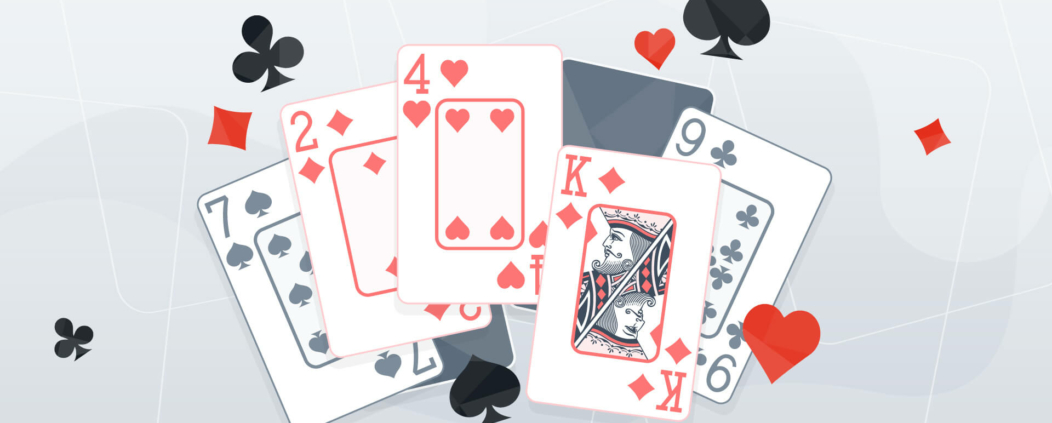
Inferences and probabilities
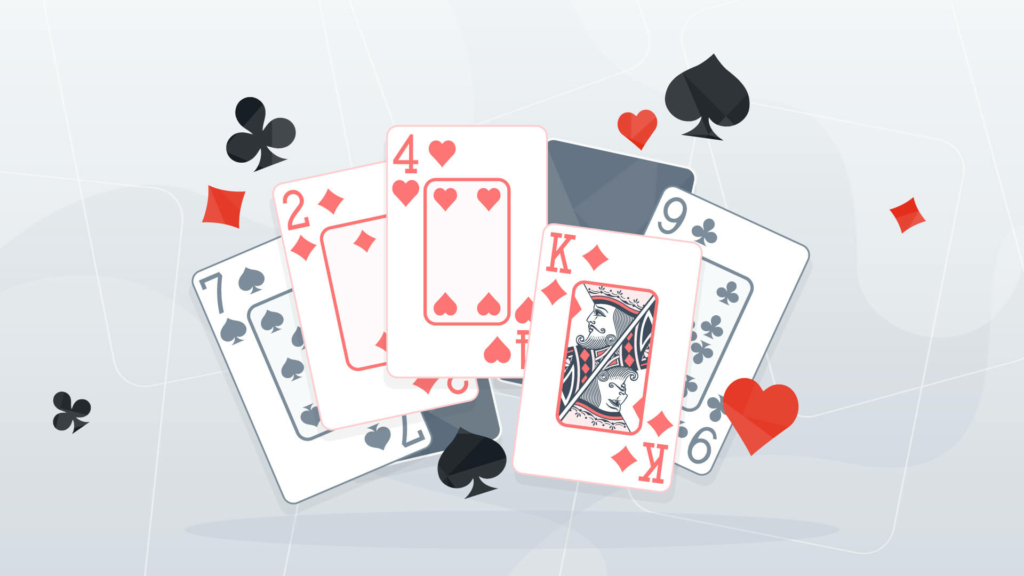
Who said that only great champions can write bridge articles? Funbridge launched a brand-new format of article a few months ago. You, talented players, will be our bridge authors and give your expert opinion about deals of particular interest to you. We are delighted to share a fascinating article written by a member of our community just below.
Focus on the author
Yoram Aviram is an experienced bridge player and a former member of the Israeli Junior and Open teams with several achievements on the national and international scenes.
Yoram left the game many years ago to focus on family and work (in the field of computerised trading of financial instruments) and switching hobbies from the mind sport of bridge to the physical sport of competitive road cycling.
He is now returning to his old passion and has adopted Funbridge as the platform on which to refresh his old skills.
He is happy to share deals of particular interest with the Funbridge community on the blog.

Inferences and probabilities
The following hand has some instructional value. It was played in a short 3 boards MP tournament.
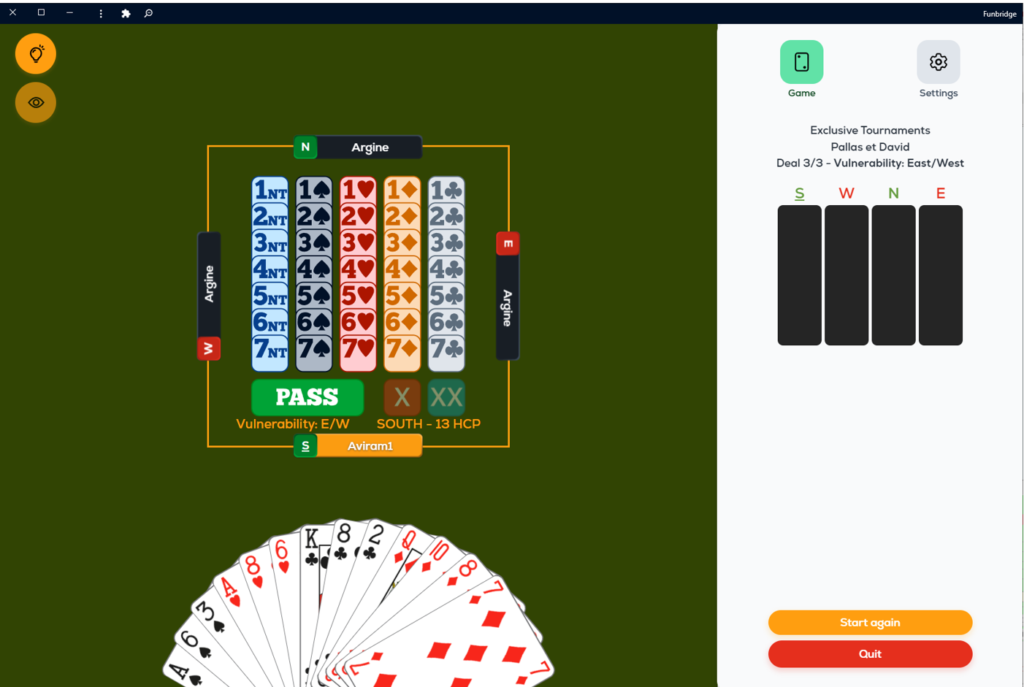
As dealer, holding the above hand, I open a natural 1♦. Partner bids 3NT which concludes a swift auction.
East leads the ♥2 and my hand becomes dummy.
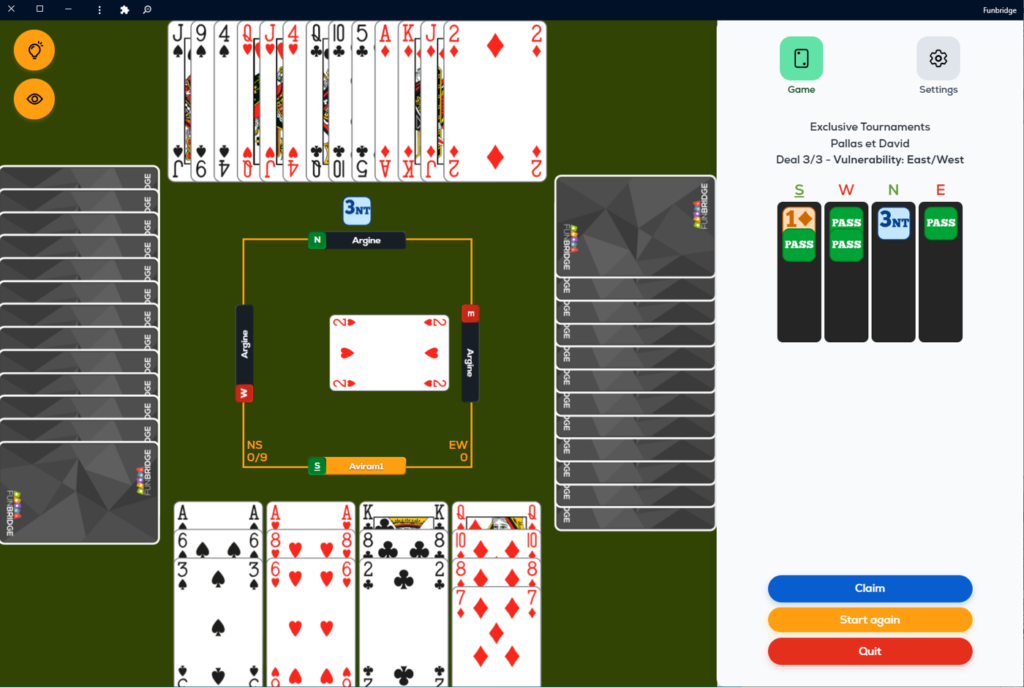
North has a mirror image of my distribution, which seems to make this 3NT a tough proposition despite the combined 27 points.
I can count 1 Spade trick, 2 in Hearts, 1 in Clubs, and 4 in Diamonds. That’s 8 in total. 1 more can be developed by finessing the ♣10 if West has the J. There is a very slight chance to develop a trick in Spades (KQ doubleton, K10 or Q10 with West – unlikely after the lead) or maybe with some kind of end-play.
For now, I play a low Heart from dummy. West wins the K and continues with the ♥7. I might need a later entry to dummy for the Club finesse so I win this in the North hand. Cashing winners in our long suits can sometimes put opponents in difficulties inducing favorable or informative discards, so I start cashing my Diamond tricks. Both follow to the A but on the K, East discards the ♠7. That’s interesting.
An inference often overlooked is from opening leads not chosen. East led the ♥2. Assuming that’s 4th best, he has a 4 card Heart suit. We now see he has a Diamond singleton. We are playing a NT contract. Our only bid suit was Diamonds. East will probably tend to lead his longest suit (unless he has an attractive honors combination in another suit, but that clearly isn’t the case here). It follows that East’s distribution is almost certainly 4-4-1-4. Let’s watch his next discards. On the 3rd diamond East discards the ♣4, dummy’s Q winning, and on the last Diamond, the ♠5. I believe East’s remaining cards are distributed 2-2-0-3. I now play a Club from hand, Dummy’s K winning. So, East has the A. That’s the position:
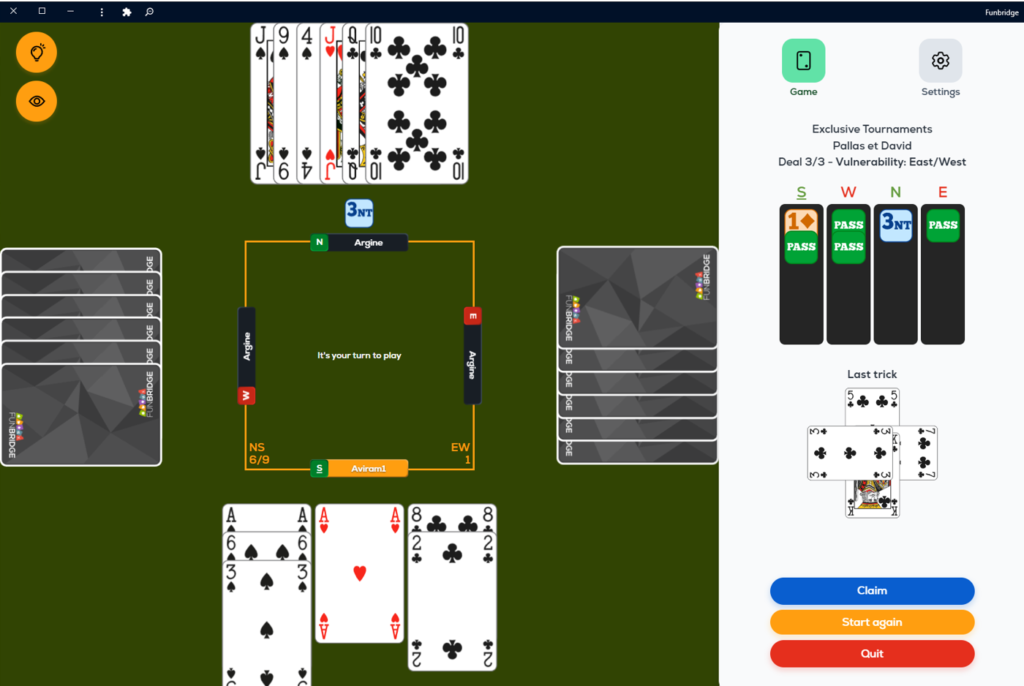
Can I do any better than try the Club J finesse? The finesse is a pure 50% chance. Can East be endplayed to play a Club from his A? I believe that’s possible. East has kept just 2 Spades. If one (or both) of them is an honor, a play of A and another spade will do the trick. If West jumps with his honor, he squashes East’s honor, promoting my J. If he lets East win this trick East will be endplayed. For East to have at least one Spade honor is a 75% chance (For West to have both is 25%), so that’s better than the simple Club finesse. Accordingly, I cash the ♠A, both follow low, I cash the ♥A (so East can’t exit with a heart) and play a Spade.
West plays the 10, I the J, and East the K. East cashes his last Heart and has to play a Club away from his A. I got my 9 tricks and am happy to note East had the ♣J, failing the Club finesse and making my effort necessary.
With cards revealed, that was the end position:
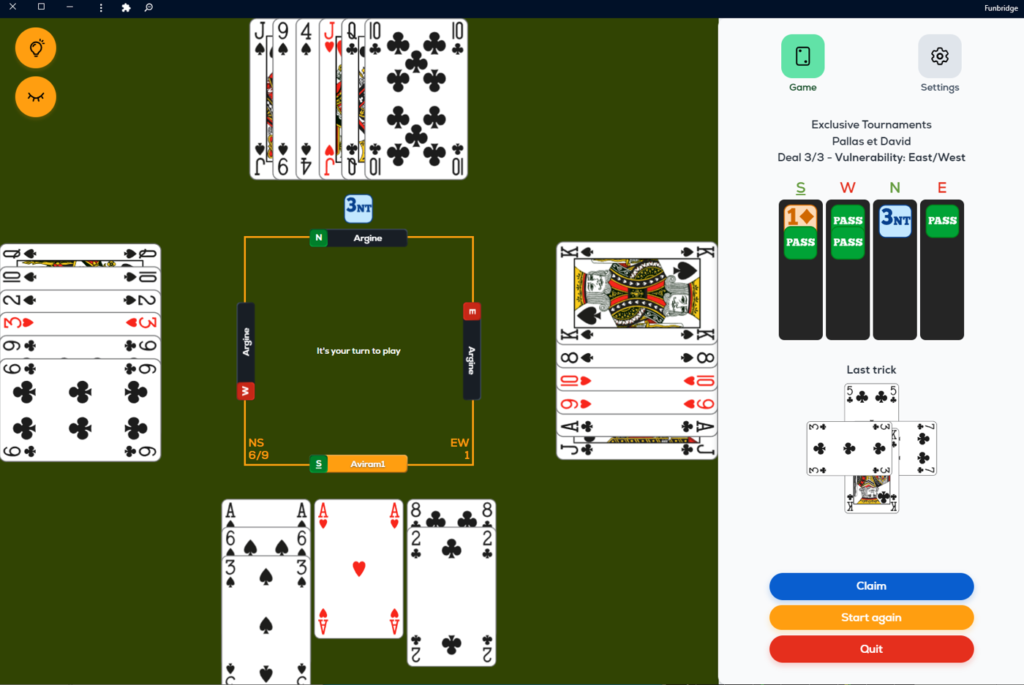
Declarer cashed the ♠A. East couldn’t avoid the endplay by unblocking the K. Declarer would simply play a Spade towards his J for the missing trick. The ♥A was cashed and a Spade from dummy completed the endplay.
Although seemingly simple, there are a few variations to the end game. For example: If East’s Spade honor was the Q, West could beat the contract by jumping with the K squashing East’s Q, and playing a club through. But then the contract would still make if west had the ♣J. Declarer might also play the Spades before playing the Club towards the K. A different endplay involving Clubs and Spades would follow. East can also elect to discard a Heart and keep 3 Spades. That will also change the endgame, but south can always prevail.
This was the full hand with cards exposed:
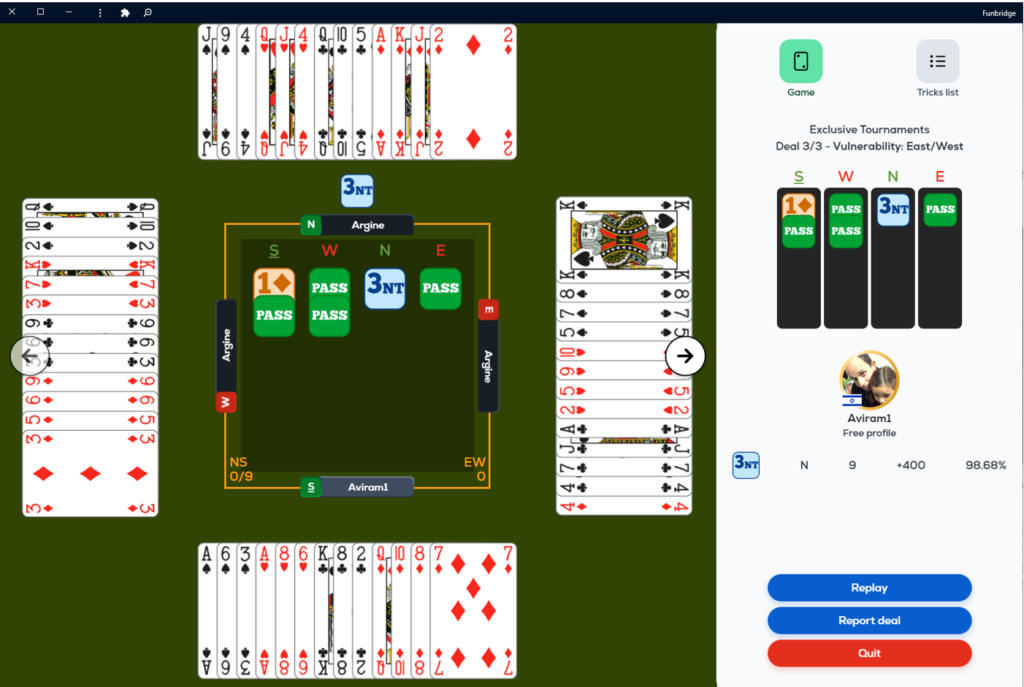
Making 3NT was worth a 98.7% score. 1 down was 51.31% as a few went down 2.
The most important point of this hand is inferring East’s complete distribution from his lead choice after discovering his Diamond shortness. At NT a lead from a 4-card suit tends to deny holding a 5+ card (unbid) suit. This lesson can be applied very frequently and more generally: Any lead (and mid-game lead) an opponent makes, carries the inference that he doesn’t have the choice of a more attractive lead. Some card holdings can thus be deemed unlikely. Here are some more examples:
- When the opponent has both the A and K of a suit, or the K, Q and J of a suit, if that suit was not led, leader’s partner has at least one of those honors.
- When the opponent underleads an honor (with no likely reason), he tends to have unattractive lead holdings in other suits too.
- If the opponent leads a suit bid by our side (in a suit contract) that will often be from a singleton.
- If the opponent didn’t lead from a singleton, that might mean he has a natural trump trick.
What is the concept behind the community articles?
Would you like to write an article too? We at Funbridge like giving our players a voice. Here is a format of articles written by the players themselves. If you see a deal of particular interest and you want to share it with the Funbridge community, tell us in the Comments section below! We will get back to you soon.

Content Manager
What did you think of this article?
Share your opinion in the Comments section below.



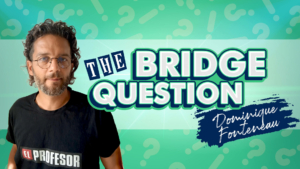
Enjoyed the article and thought process!
More line this please, thank you yoram.
Very clear and logical. Thank tou
Very useful exanple
You claim “East couldn’t avoid the endplay by unblocking the K. Declarer would simply play a Spade towards his J for the missing trick.” I think they do.
By unblocking the spade K, and playing a small spade, E can play Q and then a small club. Hence you’re still left with the A-J finesse in clubs.
Our do I miss something here?
If East unblocks the spade honour, declarer will immediately play another spade, without cashing the heart A, so he will have 9 tricks before the defense has 5.
Ah, I didn’t get that. Excellent end play options, thanks for the article!
Good example of end play logic, thank you Yoram